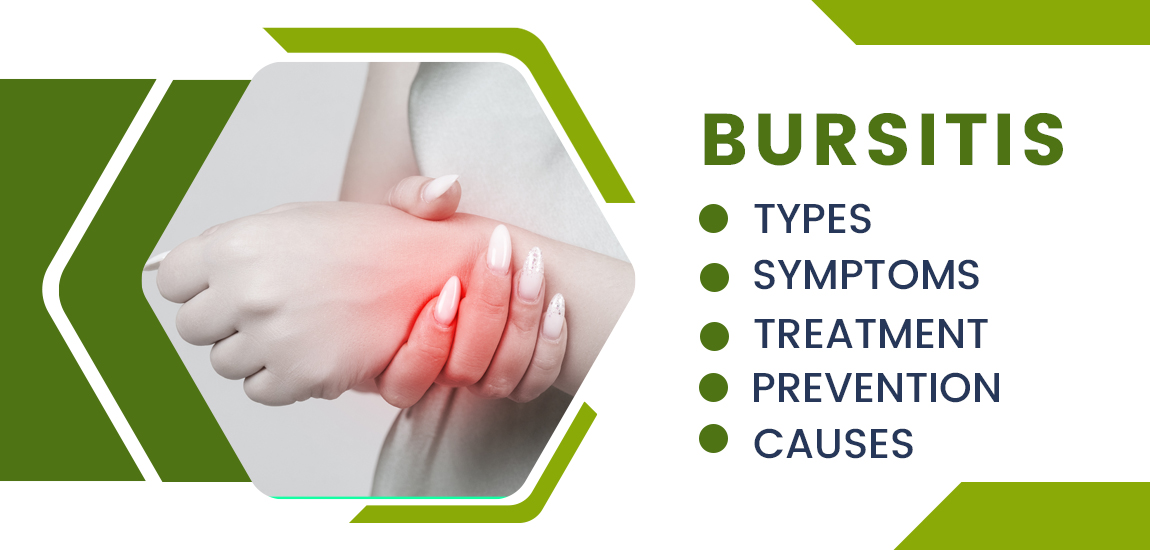Bursitis is a painful condition that affects the small, fluid-filled sacs—called bursae that cushion the bones, tendons, and muscles near your joints. When these sacs become inflamed, it results in discomfort, swelling, and limited movement. Understanding the underlying causes, identifying symptoms early, and pursuing effective treatments can dramatically improve quality of life.
What is Bursitis?
Bursitis is the inflammation of a bursa, a tiny sac filled with lubricating fluid located between bones and surrounding soft tissues. The primary role of bursae is to reduce friction and cushion pressure points between the bones and tendons or muscles. When inflamed, the bursa loses its ability to reduce friction, leading to pain, stiffness, and swelling.
Common Types of Bursitis
There are over 150 bursae in the human body, but bursitis commonly affects certain joints more frequently than others. The most commonly affected areas include:
Shoulder Bursitis (Subacromial Bursitis)
Occurs when the bursa in the shoulder becomes inflamed, often due to repetitive overhead motions.
Elbow Bursitis (Olecranon Bursitis)
Typically presents as a swelling at the back of the elbow, often caused by prolonged leaning or trauma.
Hip Bursitis (Trochanteric Bursitis)
Results in pain on the outer part of the hip, particularly when lying on the affected side or walking.
Knee Bursitis (Prepatellar or Infrapatellar Bursitis)
Known as “housemaid’s knee,” often caused by frequent kneeling.
Heel Bursitis (Retrocalcaneal Bursitis)
Usually linked to activities that strain the Achilles tendon or poorly fitting shoes.
Causes of Bursitis
The causes of bursitis can vary, but the condition is most frequently triggered by:
Repetitive motion or overuse of a joint
Prolonged pressure on the affected area
Sudden injury or trauma
Infections (septic bursitis)
Underlying conditions like rheumatoid arthritis, gout, or diabetes
Aging, as tendons become less elastic and more prone to injury
Signs and Symptoms of Bursitis
Recognizing the symptoms of bursitis early can aid in swift diagnosis and treatment. Typical signs include:
Localized joint pain that worsens with movement or pressure
Swelling and redness around the joint
Limited range of motion
Stiffness in the joint area
Warmth over the inflamed bursa
In cases of infected bursitis, there may be fever and chills
Diagnosis: How is Bursitis Identified?
Medical professionals typically begin with a physical examination and review of medical history. If needed, additional tests may include:
X-rays to rule out bone abnormalities
MRI or ultrasound to visualize soft tissues
Aspiration of bursa fluid to test for infection or crystal formation (gout)
Effective Treatment Options for Bursitis
Conservative Treatments
In most non-infectious cases, bursitis can be managed with simple at-home remedies and rest:
Rest and activity modification
Ice packs to reduce swelling
Nonsteroidal anti-inflammatory drugs (NSAIDs) such as ibuprofen
Physical therapy to strengthen surrounding muscles
Elevation to reduce swelling
Medical Interventions
For more severe or persistent cases:
Corticosteroid injections to reduce inflammation quickly
Antibiotics for septic bursitis
Aspiration of the inflamed bursa to relieve pressure
Surgical Treatment
In rare, chronic, or severely infected cases, surgical removal of the bursa may be necessary. Recovery is typically quick, and new bursae may develop naturally post-surgery.
Preventing Bursitis: Best Practices
Preventing bursitis involves lifestyle adjustments and protective measures to reduce strain on joints:
Warm up and stretch before physical activity
Avoid repetitive motions or take frequent breaks
Use knee pads or cushions during prolonged kneeling
Maintain a healthy weight to reduce joint pressure
Wear supportive footwear
Strengthen muscles around the joints to provide better support
Treat underlying health conditions like arthritis or gout
When to See a Doctor
If joint pain persists for more than a few days, or if there is excessive swelling, redness, or fever, medical evaluation is essential. Prompt treatment of infected bursitis is critical to prevent complications.
Complications of Untreated Bursitis
If left untreated, bursitis can lead to:
Chronic pain and swelling
Loss of joint function
Tendon or ligament damage
Spread of infection in septic bursitis
Early intervention ensures faster recovery and reduces the risk of long-term issues.
Outlook and Recovery
Most people recover fully from bursitis with appropriate treatment. Recovery times vary depending on the severity of inflammation and the effectiveness of treatment protocols. Patients are typically encouraged to return to normal activity gradually and to implement preventive strategies to avoid recurrence.
Conclusion
Bursitis is a manageable condition when diagnosed early and treated effectively. By understanding its causes, symptoms, and treatment options, individuals can take proactive steps to alleviate pain and prevent flare-ups. Joint health is essential to overall mobility and quality of life, and timely intervention makes all the difference.



















